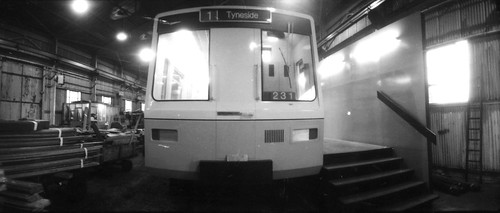In this blog post I'm giving you an example on how to do basic 2D image filtering using OpenCV and displaying the result instantly using JavaFX.
Image filtering means that you apply various transformations on a given image. Of course, image processing is math, and I'll assume since you stumbled by this blog you are familiar with the basic concepts of image processing - if not there are plenty of articles in the web which can give you a good overview. Wikipedia will always give you a broader view on the topic.
Like you've noticed in the past few posts on this blog I'm making myself familiar with the OpenCV library, and the best way to learn a new API is of course to read whats available and make your own experiments. In my case, I've made a JavaFX application which makes it easy to explore the different effects you can achieve by changing the kernel values and getting instant feedback.
Warning: This blog post is just about very basic filtering, and chances are high that some of the operations deriving from parameterizing the kernels have their own names and/or have more efficient implementations in OpenCV.
As a sidenote, if you don't already know Bret Victors talk on 'inventing on principle' you should definitely visit his web site. I've tried to make the program given below in a way that the user can experiment and maybe get new ideas about the whole problem, invent their own kernel for example. It's fun to change some values here and there ...
Like this you get an idea what's behind words like 'blurring' or 'sharpening', and find out that "finding edges" means nothing more than apply simple yet powerful mathematical operations on an 2D matrix.
I have provided some example kernels along with the application to give you some starting points - but feel free to explore the effects. Check out this page for an explanation of the used kernels in the application.
Another motivation for this blog post is to explore the feasibility of using Scala along with OpenCV and - I'm biased - I find it a very good match. Even more so if you use JavaFX to implement the GUI.
Below is the code, this is all you need for the video above. (yes - I've discovered iMovie! ;-) ).
Image filtering means that you apply various transformations on a given image. Of course, image processing is math, and I'll assume since you stumbled by this blog you are familiar with the basic concepts of image processing - if not there are plenty of articles in the web which can give you a good overview. Wikipedia will always give you a broader view on the topic.
Like you've noticed in the past few posts on this blog I'm making myself familiar with the OpenCV library, and the best way to learn a new API is of course to read whats available and make your own experiments. In my case, I've made a JavaFX application which makes it easy to explore the different effects you can achieve by changing the kernel values and getting instant feedback.
Warning: This blog post is just about very basic filtering, and chances are high that some of the operations deriving from parameterizing the kernels have their own names and/or have more efficient implementations in OpenCV.
As a sidenote, if you don't already know Bret Victors talk on 'inventing on principle' you should definitely visit his web site. I've tried to make the program given below in a way that the user can experiment and maybe get new ideas about the whole problem, invent their own kernel for example. It's fun to change some values here and there ...
Like this you get an idea what's behind words like 'blurring' or 'sharpening', and find out that "finding edges" means nothing more than apply simple yet powerful mathematical operations on an 2D matrix.
I have provided some example kernels along with the application to give you some starting points - but feel free to explore the effects. Check out this page for an explanation of the used kernels in the application.
Another motivation for this blog post is to explore the feasibility of using Scala along with OpenCV and - I'm biased - I find it a very good match. Even more so if you use JavaFX to implement the GUI.
Below is the code, this is all you need for the video above. (yes - I've discovered iMovie! ;-) ).










